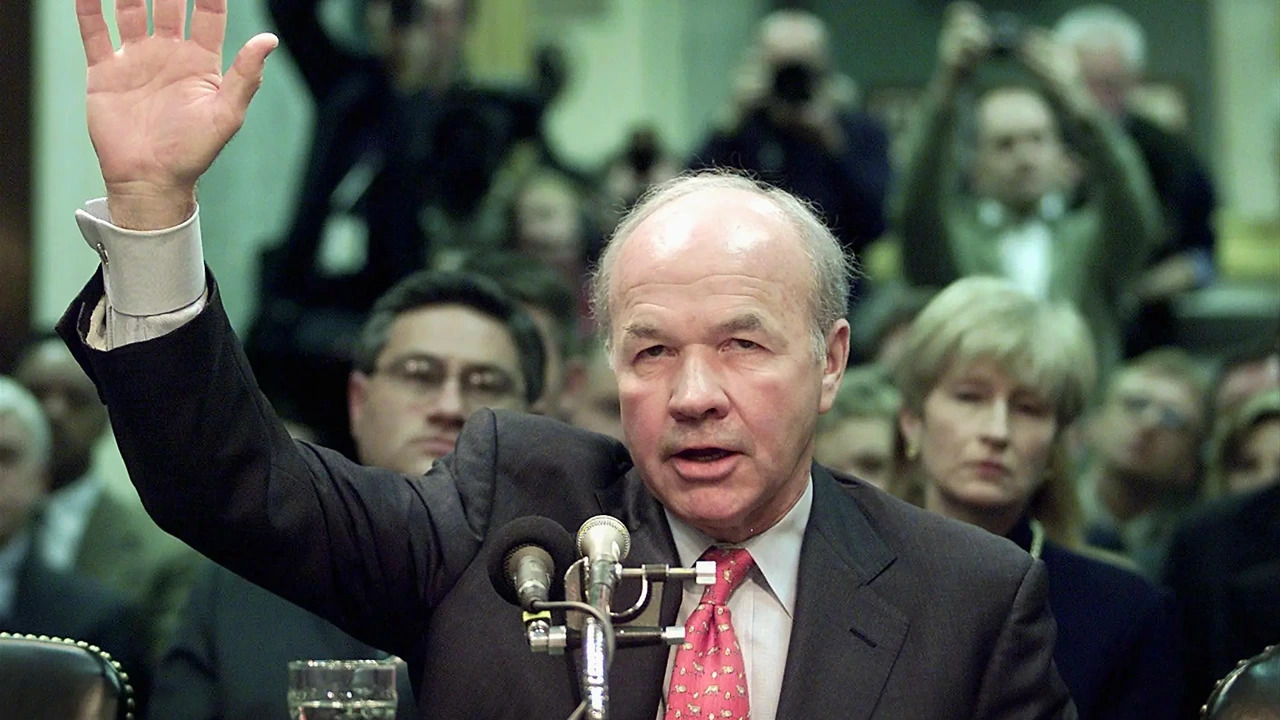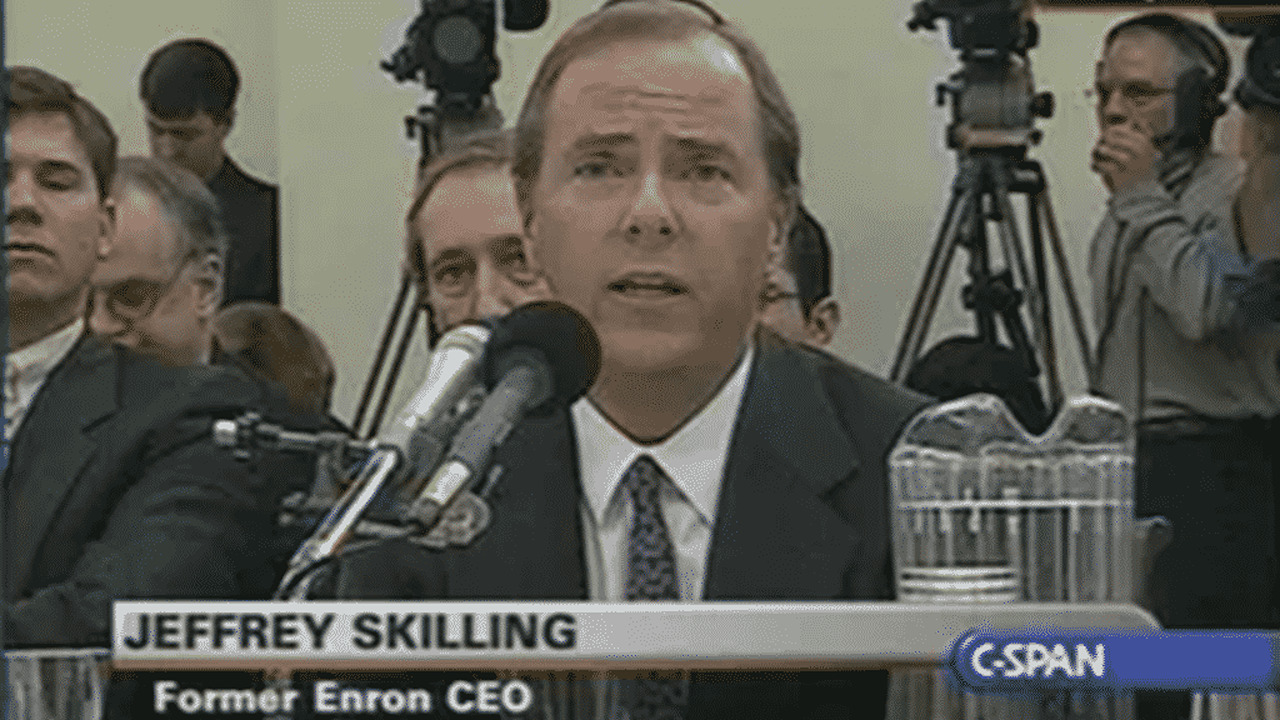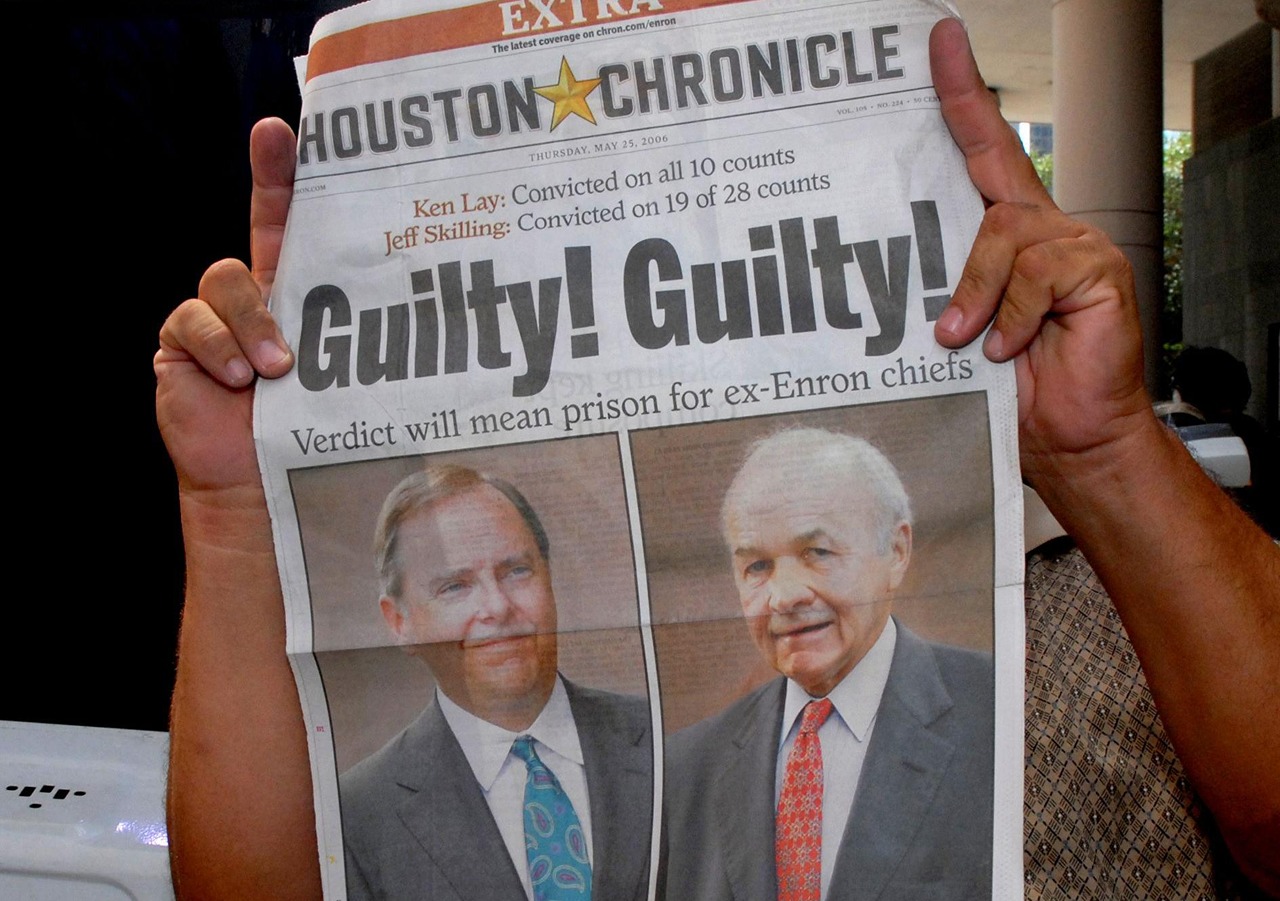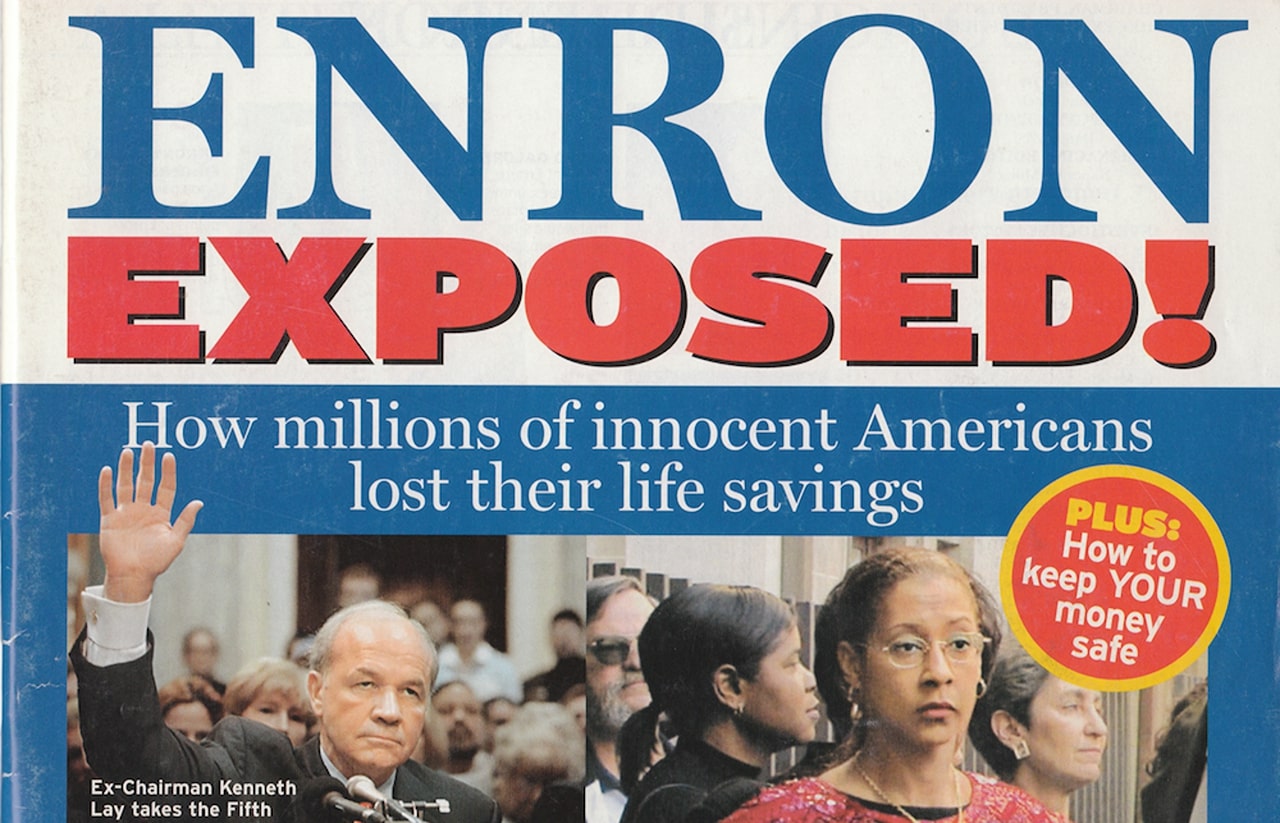An American giant full of spectacular financial successes, high energy revolution and promises of sustainable growth: Enron Corporation. But behind this glorious façade lies a quagmire of financial disaster and ethical violations.
Enron Scandal, It is known as the biggest corporate fraud in history, which is taught even in universities today. This incident, which broke out in 2001, resulted in the bankruptcy of Enron, a famous energy company at that time, and naturally affected the lives of many investors and employees. It brought financial ruin.
Enron, a pioneer of its time and a shining star, was behind this bright appearance. manipulation and fraud he was hiding it.
The Enron Scandal is one of the most significant financial scandals in US history, resulting in the bankruptcy of the company.
in 1985 Founded as an energy company in Houston, Enron has quickly become an impressive force in America’s energy and services sectors.
Natural gas It has achieved great success with its activities, communication and leadership in the paper industry. However, behind this bright period, one of the biggest scandals in the company’s history was developing. Enron’s collapse process, legal accounting rules It started at the point of violation.
Company, was infamous for its practice of off-balance sheeting by hiding losses through other companies. These results, obtained through illegal accounting transactions, gave the company a misleading strong image and inflated its stock prices.
In this case, one of the five largest auditing and accounting firms of the period Arthur Andersen is also mentioned.
Andersen, He was auditing Enron’s financial statements and undertook to cover up Enron’s fraudulent accounting practices, collecting a total of $25 million for audit services and $27 million for consulting services in 2000. He was receiving a salary of $52 million.
Although financial circles had suspicions that Arthur Andersen was causing complications in financial affairs, the company’s solid reputation overshadowed these doubts.

Kenneth Lay
But on behalf of Andersen’s investors Failure to carry out effective control and his failure to issue timely warnings led to him being subjected to serious criticism when the scandal emerged.
Also when Enron’s dirty dealings came to light At Arthur Andersen, It was revealed that the auditor responsible for Enron’s audit had put some of the important documents through a paper shredder, and the company received a great public reaction.
in 1985 Kenneth Lay Founded by the merger of Houston Natural Gas and InterNorth companies, Enron achieved rapid growth and was the largest natural gas seller in North America in 1992.
The company gained successful momentum and made a profit thanks to its high income sources and effective lobbying activities. increased its investments around the world.
This positive situation was also reflected in Enron share prices.

until 1998 shares rose slightly above the average growth rate of the S&P 500 index. It provided a regular return to its investors.
However, in 1999, the An extraordinary increase of 56%, was above the growth rate of the index. In 2000, the situation became even more difficult and Enron shares fell in comparison with the S&P 500 index. 87% came to the fore with an increase.
The data was clear that the company was growing incredibly rapidly. Between 1996-2000 The company grew by more than 750%increased its revenues from $13.3 billion to $100.7 billion.
With $138.7 billion in revenue in the first nine months of 2001, Enron was included in the Fortune Global 500 list. sixth He managed to enter from the ordinary.
This dramatic growth is typically due to annual growth, such as in the energy sector. Sectors showing 2-3% growth It represented an extraordinary situation even for
This “remarkable success” was actually a result of the accounting tricks used.

For example, the company can benefit from the long-term agreements it signs. Even in cases where the expected profit is not realized He was recording money he never received from these projects by providing misleading reports to investors.
Enron, To hide an unhealthy situation By trying to inflate his income in this way, he attempted to make as many deals as possible, making it appear that he earned much more income than he actually did.
Not limited to this, in the brokerage and consultancy services it offers, instead of the commission fee charged, total value of brokered trade was recognized as income.
The costs of canceled projects are not recorded as losses, in order to hide debts. shell companies are used and even credit transactions were recorded as sales.
Auditor of Enron Arthur Andersenthe firm was under great pressure to ignore these accounting frauds.
In particular, Enron management implied that they would work with another audit firm if Andersen did not take the required steps, and this led to the audit firm’s protection against accounting fraud. It made him reluctant.
On September 20, 2000, a Wall Street Journal reporter drew attention to this issue by writing a news story about how Enron had become widespread in the energy sector.
Then, “Is Enron Overpriced?”, written in Fortune magazine on March 5, 2001. article, arguing that analysts and investors do not fully understand how the company makes money He questioned the reasons behind Enron’s share price being traded at 55 times its value. This is where the ropes started to break.
Enron CEO Jeff Skilling wrote the article “it is unethical because it was written without sufficient information” He criticized and insulted the reporter.
The escalating controversy caused Enron share prices to plummet, creating panic in the markets.
On October 16, 2001 Enron’s announcement that it would restate its financial statements and the U.S. Securities and Exchange Commission’s decision to launch an investigation into the firm’s operations further pushed its share prices down.
In order to remedy the situation, the company share buyback programs tried to implement it but went into debt to finance these programs.
As a result, these programs consume the financial resources of the company and are subject to international credit rating agencies. by Fitch and Moody’s It led to Enron bonds being downgraded to non-investment grade.
After the debt option closed, Enron attempted to escape through a merger with Dyenergy.

However, after long negotiations Dyenergygave up on purchasing Enron, and this was the final blow for Enron.
Share prices plummeted and Dyenergy suspended merger talks, setting the stage for the company’s collapse. Bankruptcy, More than 4 thousand employees lost their jobs and is estimated to cause $74 billion in damage.
Following the investigation and lawsuits into the Enron scandal, the company’s CEO Jeffrey Skilling He was the person who received the heaviest punishment.
Skilling was sentenced to 17.5 years in prison in 2006 for conspiracy, fraud and insider trading. Enron’s CFO Andrew Fastow accused of facilitating corrupt business practices and securities fraud He admitted his crimes.
He was sentenced to more than 5 years in prison despite making a cooperation agreement with federal authorities. Enron founder Kenneth LayHe was convicted of fraud and bank fraud.
Arthur Andersen is for illegally destroying documents related to a U.S. Securities and Exchange Commission investigation. He was found guilty and his ombudsman license was revoked. However, this sentence was later overturned by the appeals court. Still, the firm lost credibility and dissolved itself in 2002.
At the same time, the scandal exposed weaknesses in the regulatory system and problems that allowed Enron to engage in fraudulent practices undetected for years.
These events triggered significant reforms in accounting and corporate governance practices. Sarbanes-Oxley Act of 2002 These reforms included the creation of the Public Company Accounting Oversight Board and imposed stricter standards on public companies and auditors.
In conclusion, This scandal and the convictions in subsequent cases led to significant changes in financial regulation and accounting standards and also highlighted weaknesses in regulatory processes. an effective control mechanism triggered its creation.
These events are important in corporate governance and financial reporting. How critical transparency is It also emphasizes the need for a more robust ethical framework in the business world.
Our other content about companies:
RELATED NEWS
From Yellow Pages to Yellow Site: How Did sahibinden.com Manage to Become a Platform on which Billions of Lira Trade Returns?
RELATED NEWS
The Foundation Story of Migros, which traveled from neighborhood to neighborhood with trucks when it was first established in Switzerland, extends to Turkey
RELATED NEWS
What Happened to Our “Local and National” Operator Aycell and He Suddenly Disappeared? (Even dealers defrauded the company!)
RELATED NEWS
Meet Turkey’s Best Selling Person: Here is Hamdi Akın’s Extraordinary Story That Took Him to Success Step by Step
RELATED NEWS
